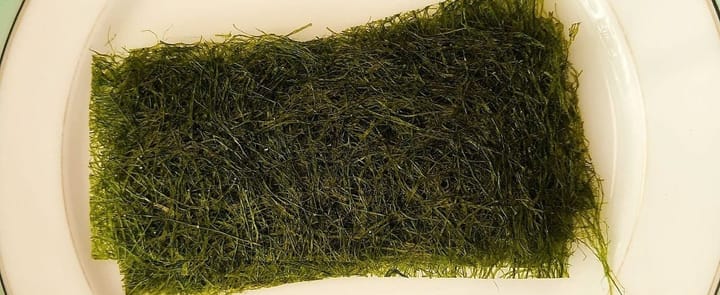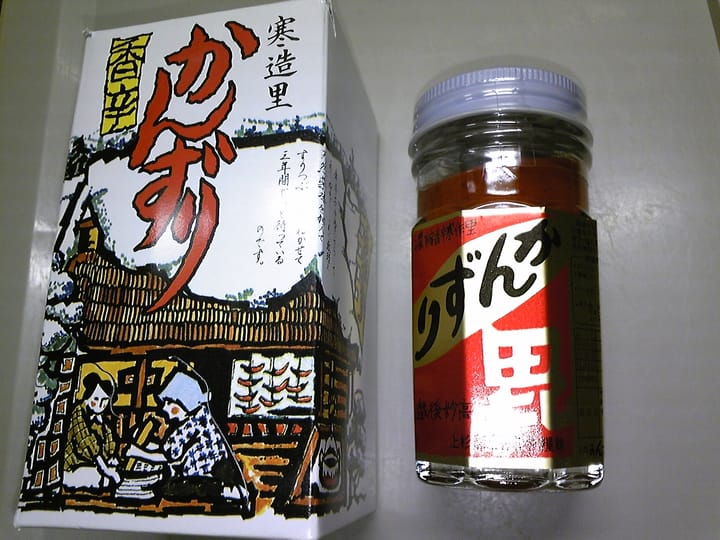White Asparagus: Here's Why It's So Expensive
Dubbed "white gold," white asparagus, priced at $50/kg, enjoys a brief season in Central Europe. Its distinct flavor and underground cultivation make it a prized ingredient, often served with hollandaise by top chefs.

Often dubbed "white gold," white asparagus commands a price nearly triple that of its green counterpart, standing at $50 per kilogram.
This pricey vegetable, boasting a robust stalk, graces Central European farms just for a brief three-month season. During this fleeting window, global restaurants eagerly showcase dishes spotlighting it.
Esteemed chefs laud its juiciness over the green variant, typically serving it freshly boiled, adorned in hollandaise. Given its specialized underground cultivation method, dishes featuring this delicacy naturally carry a higher price tag.
What is White Asparagus?
White asparagus, also known as "spargel," is fundamentally the same plant as its green counterpart. The distinction lies in its cultivation: it's grown underground to keep it from turning green.
In the absence of sunlight, photosynthesis is stunted, thus preventing the asparagus from producing chlorophyll - the pigment responsible for the green hue of regular asparagus.
White Asparagus: Europe's Popular Gilded Delicacy
The Spargel enjoys immense popularity across Europe, with the notable exception of the UK, which favors green asparagus. Key aficionados include the Netherlands, Spain, France, Switzerland, and notably, Germany.
Certain German locales with sandy terrains excel in its cultivation, making white asparagus, or "Spargel," a significant enterprise.
During the Spargel season in the spring (April until June), asparagus-centric restaurants ("Spargelhof") emerge, offering specialty menus, orchestrating "Spargel Routes," and hosting vibrant week-long festivals crowned with "Spargel queens."
In mainland Europe, canned white asparagus is a supermarket staple, indicating its widespread consumption.
History and Origin of Spargel
White asparagus has its roots in Europe, with records of its consumption going back to ancient Greece and Rome.
It became particularly popular in France and Germany in the 18th century. Today, it's considered a seasonal delicacy in many parts of Europe, especially in Germany where its arrival is celebrated with "Spargelzeit" (asparagus time).
Why is White Asparagus So Expensive?
White Asparagus Cultivation
Growing white asparagus is a nuanced process. This delicate vegetable prefers sandy terrains; in clay or loam soils, it tends to grow slowly and may acquire a bitter taste.
The cultivation technique is distinctive: asparagus is blanketed beneath soil mounds or shielded by dark covers to protect them from sunlight. Plantation initiation is a complex endeavor.
Seeds are planted in spring, and the first year is devoted solely to plant growth, sans harvest.
Farmers craft soil mounds around the asparagus, sheltering crop rows with reflective foil tops that not only block sunlight but also regulate underground temperature.
The second year sees a limited harvest period of 15 to 20 days. However, it's the third year when the plantation truly flourishes, yielding about 15 shoots per asparagus over three months.
Being a perennial crop, it continues to produce for nearly a decade before necessitating replanting. This cultivation period demands constant care, all the while incurring expenses without immediate returns.
The Intricate Process of Harvesting Europe's White Gold
Harvesting white asparagus is a meticulous art requiring both skill and precision.
This vegetable, grown shielded from the sun, undergoes a color metamorphosis—from ivory to lavender-rose and purple—once exposed to sunlight, resulting in a richer, tangier flavor.
In fields shielded from sunlight, workers adeptly employ unique tools to ensure the asparagus remains concealed. Once the stalks break the soil's surface, they're promptly harvested to prevent them from greening.
Their extraction method is both delicate and strategic: they approach from the side, pinpointing the sturdy center of the stalk, and lift it with strength and finesse.
The robustness of these stalks, sometimes over an inch in diameter, adds to the challenge.
Asparagus can grow remarkably fast, often over two inches overnight. Quick actions are taken for those stalks breaking ground, with the tops being snipped.
After harvest, in a humid environment, they're trimmed to 8.6 inches, washed, and chilled immediately due to their high water content.
Prompt action is vital, as its freshness wanes just about 10 days post-harvest. Workers then grade the asparagus, with the premium, priciest spargel being immaculate white, flawlessly straight, and robust.
Stalks with imperfections are segregated as secondary quality.
Short Harvest Season of Spargel
The white asparagus season is short, usually from April to June, which adds a sense of urgency and demand.
Europe's White Asparagus Craze
White asparagus's stature as a gourmet gem contributes to its premium pricing.
Delicacies, by nature, are prized for their distinctiveness and exceptional quality, commanding higher market values.
The fervent demand for white asparagus is palpable across Central Europe and extends to eateries worldwide.
Its unique flavor and limited availability seasonally drive this surging appetite, making it a sought-after ingredient on international menus.
Flavor Profile
Europeans, especially the Germans, have an unparalleled passion for white asparagus, termed "spargle" in their lexicon.
When it comes to taste, white asparagus is more tender and has a milder, more delicate flavor compared to its green counterpart.
Some describe it as slightly sweet, nutty, and earthy with less of the characteristic bitterness found in green asparagus.
On the downside, the white asparagus spears tend to be more fibrous than the green variety, it's common practice to strip away the outer layer using a vegetable peeler prior to cooking.
White Asparagus Grading Guide
Green asparagus may vary in stalk thickness due to its variety, not quality. However, with white asparagus, the thicker stalks are especially prized. The grading system is as follows:
- Premium Grade: Stalks with a diameter exceeding 12mm, straight and of prime quality - a premium choice!
- Grade I: Stalks surpassing 10mm in diameter, mostly straight with slight curvature permissible - a balanced blend of quality and value.
- Grade II: Stalks over 8mm in diameter, with more relaxed shape criteria - an economical pick!
Culinary Uses for White Asparagus
White asparagus is cherished for its distinct, delicate flavor and can be incorporated into a variety of culinary delights. Here are some popular ways to use white asparagus in the kitchen:
- Classic Boiled or Steamed: White asparagus shines when it's simply boiled or steamed and then drizzled with melted butter, sprinkled with sea salt, or paired with a velvety hollandaise sauce.
- Grilled or Roasted: Even though it's often eaten boiled, grilling or roasting white asparagus can add a unique depth to its flavor. Toss it in olive oil, sprinkle with salt and pepper, and place on a grill or oven until tender.
- Creamy Soups: White asparagus makes a luxurious, creamy soup. Blended with onions, garlic, broth, and seasonings, it can be topped with a dollop of crème fraîche for an added touch.
- Salads: Chopped white asparagus can be tossed into salads. Whether it's a simple green salad or a more elaborate concoction with nuts, cheeses, and other vegetables, its mild flavor complements many ingredients.
Health Perks of White Asparagus
White asparagus offers many nutritional parallels with its green sibling, both championed as dietary staples for wellness.
Nutritionally speaking, white asparagus impressively provides twice the vitamin C while containing half the vitamin A when compared to green asparagus on a per-cup basis.
Bursting with flavonoids, it stands as a rich source of antioxidants and anti-inflammatory agents. Its unique cultivation results in a heightened fiber content compared to the green variety.
Additionally, white asparagus promotes gut health with its prebiotic properties, fostering beneficial bacteria within the digestive system.
Interesting Facts
- "White Gold" or "Edible Ivory": Due to its color and high value, white asparagus is often referred to as "white gold" or "edible ivory" in regions where it's popular.
- Peeling is Crucial: Unlike green asparagus, the outer layer of white asparagus is woody and tough, so it must be peeled before cooking.
- Beneficial Nutrients: While it lacks the green chlorophyll, white asparagus is rich in vitamins and minerals, particularly vitamin C and folate.
- Traditional Dish: In Germany, a traditional dish is white asparagus served with hollandaise sauce, boiled potatoes, and ham.
- Celebratory Festivals: Many European regions have festivals dedicated to the white asparagus harvest, where it's celebrated with much fanfare and a variety of asparagus-centric dishes.
Final Thoughts
As a gourmet and critique, indulging in white asparagus is a culinary voyage. Its nuanced flavor and storied past elevate it to a gem among luxury edibles.
Often referred to as "edible ivory," it's a testament to European culinary heritage.
For those fortunate enough to partake in the Spargel festival, each bite becomes a richer experience, intertwining tradition, craft, and celebration. Dive in, relish, and immerse yourself in the exquisite realm of white asparagus.


